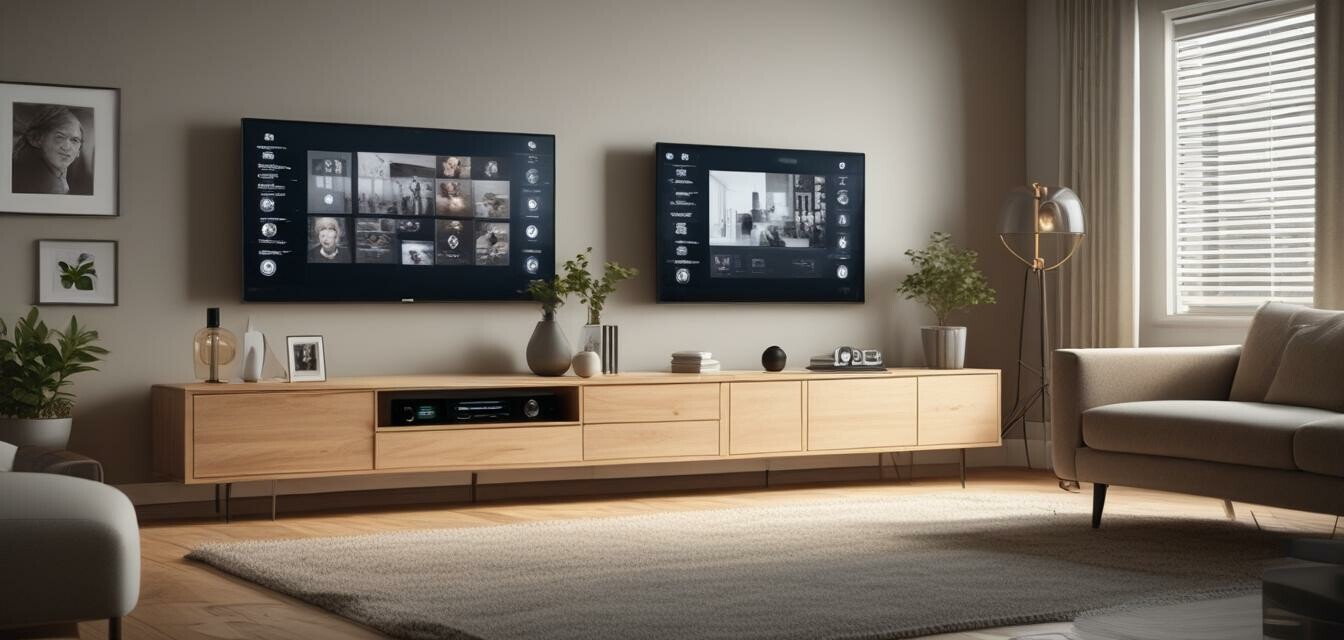
Increasing Accessibility in Smart Devices for Seniors
Key Takeaways
- Smart devices are being designed with accessibility features to aid seniors.
- Voice control and intuitive interfaces play a significant role in user satisfaction.
- The trend is improving independence and safety for seniors at home.
- Continuous updates and innovations ensure that technology meets the evolving needs of older adults.
- Smart home technology is becoming essential in supporting caregivers and enhancing quality of life.
The landscape of technology is evolving, and one of the most exciting advancements is the increasing accessibility of smart devices for seniors. As the population ages, it's crucial that smart home gadgets cater to the unique needs of older adults, making their lives easier, safer, and more enjoyable. In this article, we will explore how these devices are becoming more user-friendly, the importance of this trend, and what it means for seniors and their caregivers.
Why accessibility matters
Accessibility in technology is not just a bonus; it’s a necessity. With a growing number of seniors living independently, ensuring that they have access to user-friendly devices can significantly affect their quality of life. Below are some key reasons why accessibility matters:
- Empowerment: Accessible devices enable seniors to take control over their daily routines.
- Safety: Smart devices can provide alerts for activities and help monitor health conditions.
- Independence: Easier technology means older adults can maintain their autonomy longer.
- Caring Support: Family members can keep tabs on their loved ones with smart home technology.
Key features enhancing accessibility
Smart devices for seniors now come with various features designed to enhance usability. The following table highlights some key features that are making a difference:
| Feature | Description |
|---|---|
| Voice Control | Allows users to operate devices hands-free, making it easier for those with limited mobility. |
| Large Display/Font | Displays text and icons in larger formats to assist those with vision impairments. |
| Intuitive Interfaces | Simple and clear navigation that reduces confusion and frustration when using devices. |
| Customizable Settings | Users can adjust options based on personal preferences to enhance their experience. |
Smart home assistants
Connected home assistants are a prime example of how accessibility is prioritized. These devices allow seniors to control various aspects of their home with their voice, reducing the need for physical interaction. Thanks to integrations with smart lighting, heating, and security systems, they can effortlessly manage their environment.
Explore connected home assistants for more information on how these devices enhance everyday living.Health monitoring devices
Health monitoring devices are becoming more user-friendly as well. Many of these devices now feature simple designs, making it easier for seniors to track their health conditions. Family members can also receive updates, raising awareness about loved ones’ health without intrusive measures.
Learn about health monitoring devices that are making an impact for seniors and caregivers alike.Innovations driving change
Technology companies are actively seeking feedback from seniors and caregivers, which is helping in the development of innovative solutions. The integration of AI and machine learning is allowing these devices to learn individual preferences and improve over time. Here are some innovations to watch for:
- Smart refrigerators: Features that remind seniors when groceries are running low or when food items are expiring.
- Fall detection systems: Automatically notify caregivers or emergency services if a fall is detected.
- Remote medication reminders: Devices that remind seniors to take their medications while allowing caregivers to monitor compliance.
Future of smart home technology for seniors
Looking ahead, we can expect continued advancements that will further enhance accessibility in smart devices. As technology evolves, it will likely integrate more health-related features, making it an essential asset for seniors and their caregivers.
- Development of wearables that sync with home devices for a seamless smart living experience.
- Greater focus on cybersecurity to ensure personal data remains safe as technology becomes more integrated.
- Collaborations between tech companies and health organizations to create tailored solutions.
The importance of caregiver involvement
The transition to smart home technology is not just about the seniors' adaptation but also involves the caregivers' participation. Training and support systems need to be in place to help caregivers feel confident in assisting their loved ones with these technologies. This collaboration fosters a better understanding of how to manage devices and allows for a smoother experience.
Tips for caregivers to assist seniors with smart devices
- Provide hands-on demonstrations on how to use the devices effectively.
- Encourage seniors to engage with technology at their own pace.
- Set up family alerts for health monitoring devices to maintain open communication.
- Foster a supportive environment where seniors feel comfortable asking questions.
Pros
- Enhances independence for seniors.
- Improves safety and provides peace of mind to families.
- User-friendly designs cater specifically to seniors’ needs.
- Continuous updates keep devices relevant and effective.
Cons
- Initial setup can be challenging for some seniors.
- Technology literacy varies among seniors, causing frustration.
- Potential over-reliance on technology can lead to negligence in personal interactions.
Conclusion
As the world embraces technology, the importance of making smart devices accessible to seniors cannot be overstated. Through innovative designs, features that promote usability, and collaborative efforts between designers and users, we are seeing a shift that dramatically enhances the lives of older adults. Ultimately, this trend not only provides practical benefits for seniors but also serves as a powerful tool for caregivers, aiding in their efforts to support their loved ones. Keep following our news and trends section to stay updated on the latest developments in smart home technology for seniors.